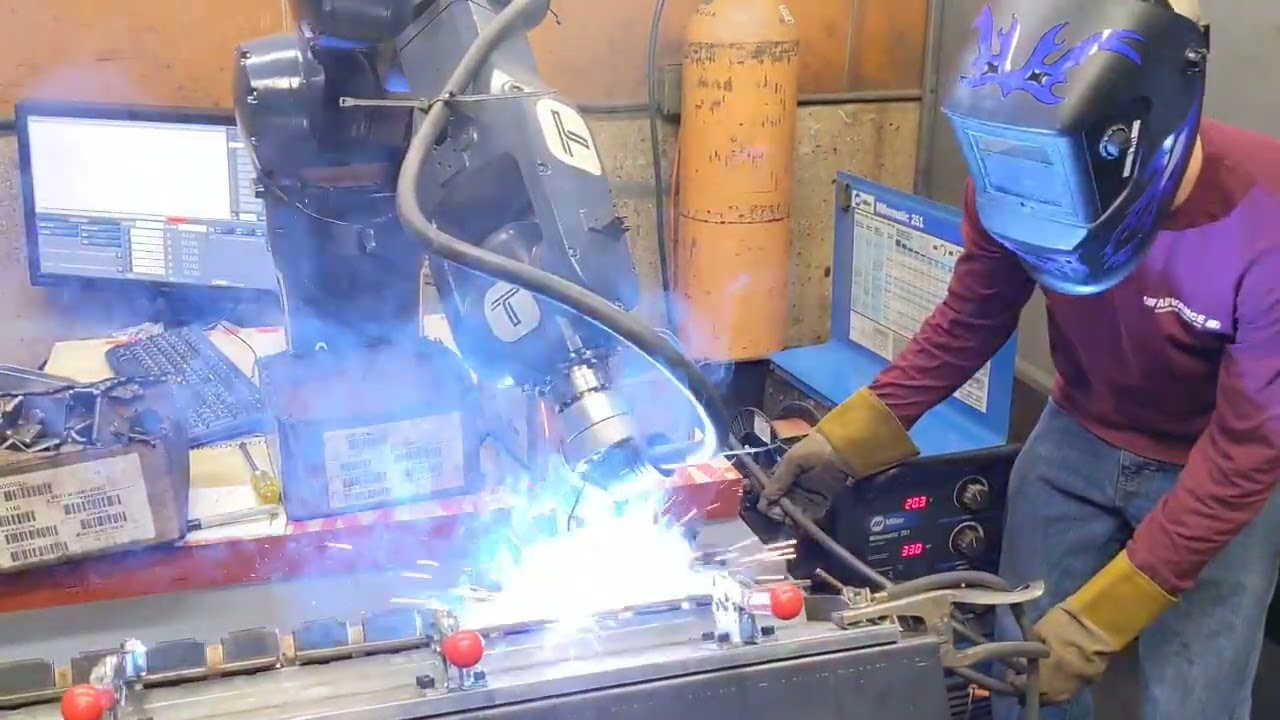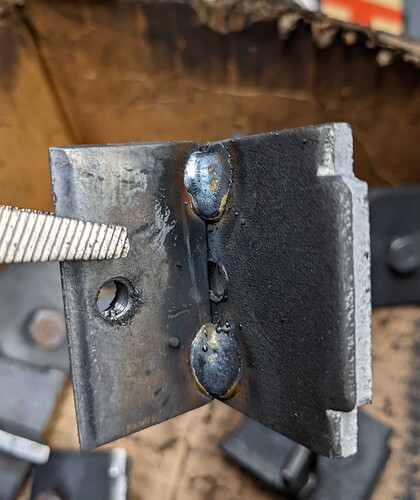Some forum users may remember the Welding experiments with the ZA6 post. I thought I’d provide an update now that the customer is up and running:
After a few teething troubles they are now consistently making good parts. The issues we ran into ranged from mundane to interesting:
- The welder they allocated to this trial was old, and we found a crack in the shielding gas tube that was causing insufficient shielding gas
- The gun liner is a little worn, so a sharp bend in the cable running from the welder to the torch tip reduced the wire deposition in certain robot orientations
- The lack of a process move (where the tool control point can be commanded to move at a set linear feed rate) meant that the pieces in the middle of the fixture were being welded at a slightly higher feed rate. Our current movel() command does take a velocity command, but it’s a scale from 0 to maximum achievable velocity, and the joint orientation of the robot is such that “max velocity” is a little higher in the middle of the fixture. It was easy to work around. We should have a process move in the next couple of months, so this issue will be solved shortly.
This whole process was fairly easy because the pieces they are welding are so simple - two small welds on either side of a threaded hole:
Their next steps include:
- Install light curtain safety interlock and welding curtains across front of the welding area
- Move computer out of weld area and provide access to operator to start/stop program
- Make two more fixtures so that the operator can load one while the robot is welding one
Tormach’s next steps include:
- Finish software work to include a “process” move where the tool control point can be commanded to move at a set linear feed rate (should be released in May 2022)
- Consider adding a weave or similar pattern to a linear move to help improve weld quality or deposit more material
- Testing Fusion or SprutCAM-created tool paths on more complex geometries, e.g. intersecting pipes.
Eventually I think that the customer may want to invest in a robot-specific torch, but for now the manual torch hose-clamped to an aluminum bar is doing the trick.

